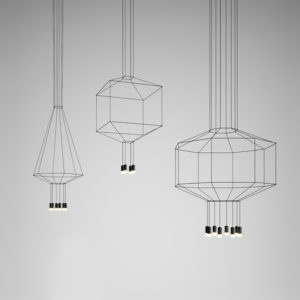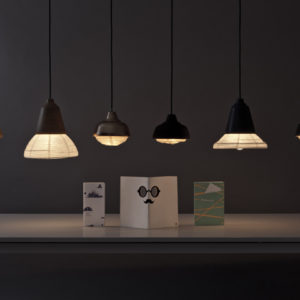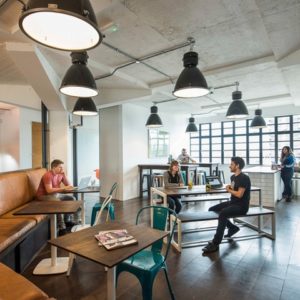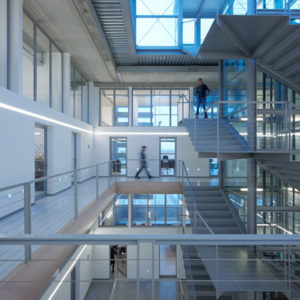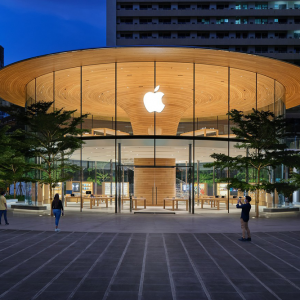


CHALLENGES
Jardín del Asia restaurant is part of Los Tajibos Hotel, the most luxurious and important hotel in Santa Cruz de la Sierra, the largest urban center in Bolivia’s eastern region. This solution takes advantage, through a minor constructive intervention, of an old warehouse, located between the hotel’s Convention Center and parking lot. The structure is divided in three sectors: outside garden, dining area and service area.
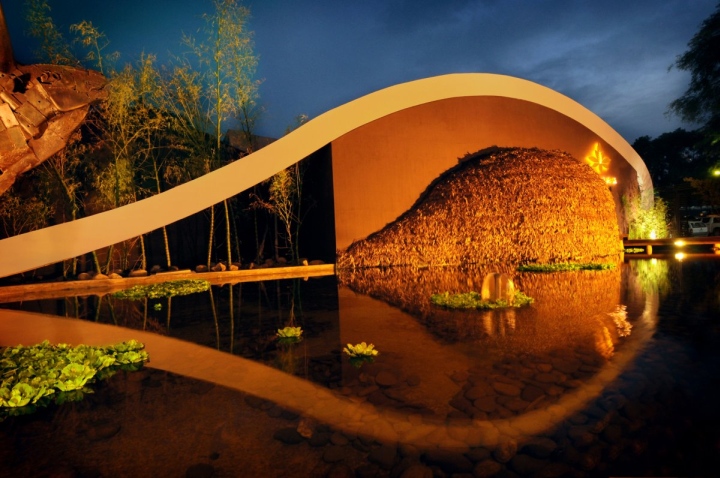
Located on an important avenue, the outside garden allows for a convenient independent and direct entrance to the restaurant, taking care not only of the guests but also the external clients. The kitchen, and supply areas enjoy the advantage of being directly linked to the hotel’s main service areas and corridors, leaving the urban front completely free of obstacles in order to present the entire proposal The tropical warm and humid climate of the country’s economic capital, conditioned both the conceptualization of the program as well as the morphology and technology that was used.
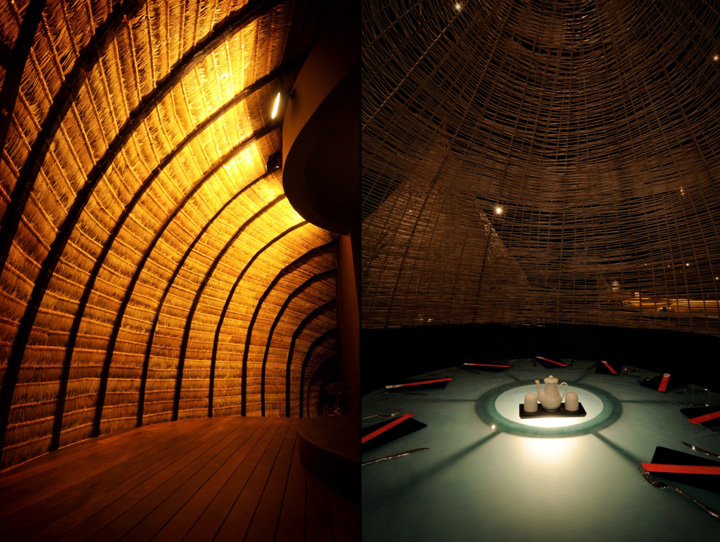
The program demanded a restaurant where six microenvironments could develop simultaneously an in an integrated but subtly separated fashion, under the same roof: lounge, liquor bar, sushi bar, fusion tables, private areas for groups and teppanyaki tables. To meet the functional requirements of a restaurant for 150 diners, the symbolic demands expected from a facility oriented to serving the guests of a five star hotel had to be added.
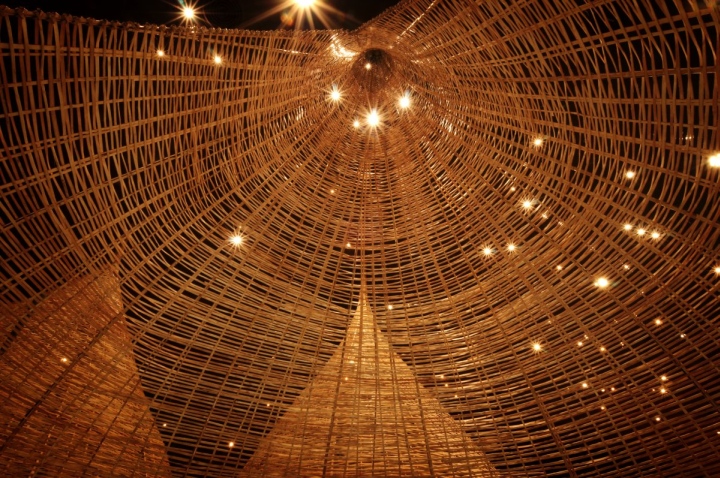
The public and private, the formal and informal, the festive and romantic, the individual, the couple or the group should be able to find – and appropriate – a corner, a niche, a sector of the dining area. In general, the response was to generate an atmosphere that was simultaneously artificial and natural, where spatial Asiatic concepts articulate technology and materials that are typical of the ‘pampa area’ and tropical forests of Bolivia’s Eastern region, through the integration of landscaping, urban, architectonical, cultural and technological concepts.

SOLUTION
The spatial intention to offer clients a warm alternative to escape from the pressures of daily life, became concrete with a proposal enriched with luminous hues, intimate jalousies, sceneries and symbolic suggestions, that harmonically build a landscape, which in spite of having been invented and cloistered, is perceived as natural and infinite. To attain greater emotional effectiveness, guidelines are established, paths are suggested, pauses are defined, and finally various sojourns are proposed under an artificial firmament; a scenography that as a whole produces an almost magical spatial confusion in the visitor, although intentional, that is translated into a virtual visit to a native village, in the middle of Bolivia’s Amazonian tropical jungle.

A Zen garden, with a water mirror and tropical vegetation, strategically inserted between the street and the entrance, welcomes the guests while it sets the limits with the chaotic outside world. It motivates contemplation and releases tensions, the erratic swimming paths of multicolored carps and the breeze perceived in the water mirror is appreciated during the paused walk while crossing the wooden bridge that connects the sidewalk with the building.
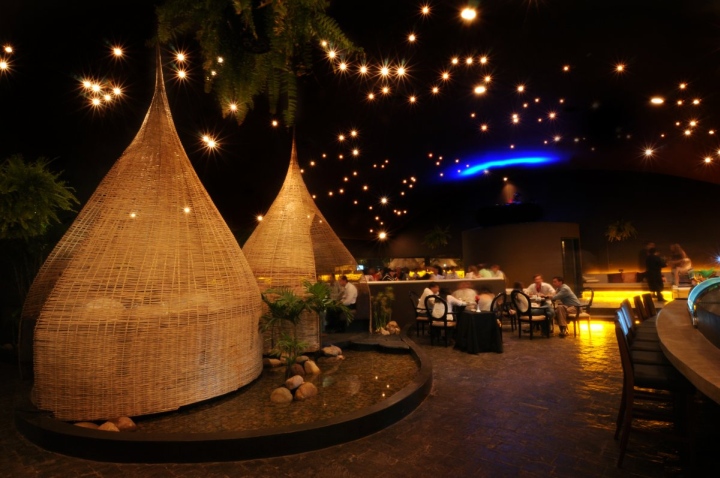
As the visitor approaches the entrance, it becomes evident that monumentality anticipates an imminent transition, which implies at the same time an end as well as a beginning, the end of the noise and the beginning of peace. The entrance reproduces the silhouette of a drop of water, a shape that anticipates upon entering the generating idea of the proposal.
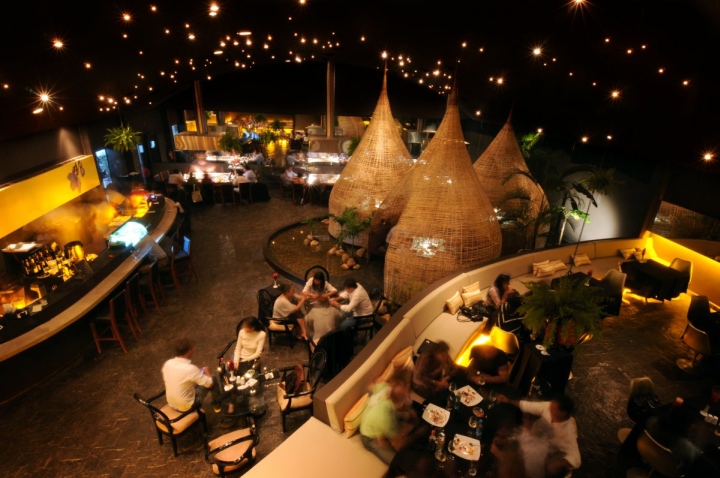
The first steps of this transition imply a second pause, generated by the warm welcome of a vault-shaped area built with chuchío reeds and jatata, which leads to a cubicle, that acts as the reception area, and in reality constitutes the third pause, the last one before concluding the transfer process. The aim of this complex transition that was carefully planned by the architect is to prepare the guest for the full enjoyment of an environment where peace, silence, time and solace reign.

The landscaping dimension of the inside is attained through a series of artifices generated from two metaphors, water, the source of life and by extension, a source of culture and traditions; and the firmament, a mystical expression of what is eternal, universal, as well as spiritual. Thus, under the light of the stars, from the somewhat elevated lounge the sinuosity that suggests a micro-valley is appreciated, which hosts the pond where three huts were built with intertwined chuchío reeds that simultaneously resemble water drops and native housing, imitating a village landscape whose backdrop is regularly disturbed by the intermittent fire from the three bar-tables destined to teppanyaki.
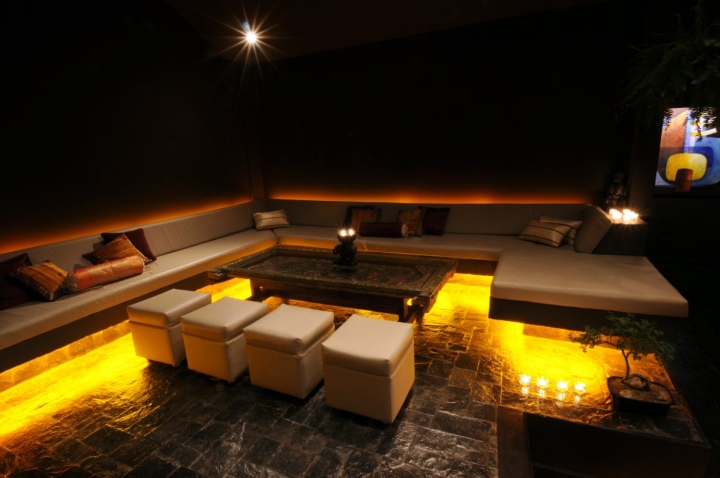
The oriental, in its Asian sense, is expressed and perceived not only with the suggested or concrete presence of the four natural elements: water, air, land and fire, but also the subtlety of indirect light, the furniture and most importantly, the atmosphere that is achieved. For its part, the oriental, in its Bolivian sense, is expressed in the tropical Amazonian vegetation composed by shrubs and palm trees, and materials such as wood, chuchío reeds and jatata, that are still being used nowadays by native cultures in the forests and pampa region of Chiquitos and Moxos.
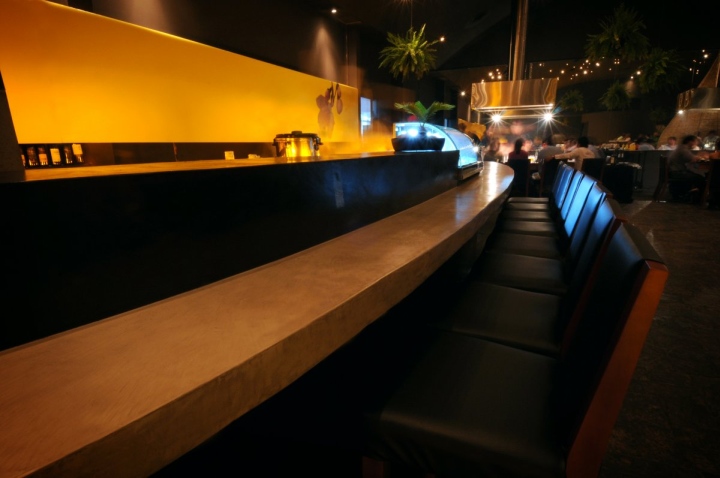
To sum up, the freedoms allowed by this gastronomic fusion, have served as a pretext to establish a setting that blends landscaping, urbanism and tropical architecture, oriental and contemporary interior decoration and provides subtle perceptions that favor the enjoyment of the senses in a peaceful and harmonious environment. As pointed out at the beginning, architecture as a scenography to be experienced, complements the gastronomy and offers an integral and holistic environment that is characteristic of the flavors and odors that are typical of oriental fusion, this time, not only Asiatic but Bolivian as well.
Architect: Juan Carlos Menacho
Photography: Enrique Menacho
http://www.contemporist.com/2013/05/02/jardin-del-asia-restaurant-by-juan-carlos-menacho/










Add to collection


